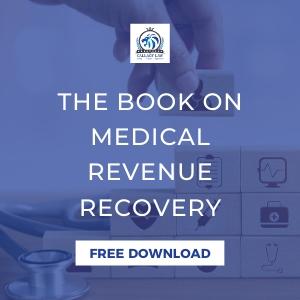In an ideal world, medical providers wouldn’t have to worry about becoming collections agents or chasing payment for services rendered. And they would not have to fight for reimbursement for costs and treatments incurred in the course of doing their duty. It is not an ideal world, and the reality is that healthcare underpayments can, and do, significantly impact practices all around the country.
When you treat a patient, do you strive to give them 100% of the benefit of your skill, training, and empathy? Of course. You wouldn’t feel satisfied giving them 62% of the treatment they deserve. Healthcare underpayments, though, are rampant and do not fully compensate providers for their services and time.
While this problem is notorious when it comes to Medicaid and Medicare payments (to the tune of $77 billion annually), it does occur – with all too alarming frequency – with private insurance carriers, resulting in financial worries and constraints for providers. According to the American Medical Association, payments from commercial insurers can average 38% below costs.
What can you do to mitigate the cost of underpaid claims? How can you fight back?
Addressing Healthcare Underpayments In Your Practice
The good news is that there are several steps you can take to address the critical issue of healthcare underpayments. We recommend:
- Reviewing Your Contracts
It is important to understand that the burden of proving that an insurance carrier underpaid a claim falls on you, not them. You must show that the insurance company did not live up to their contractual obligations. Easier said than done: agreements are infuriatingly complex and, often, ambiguous. This can lead to protracted legal processes, including litigation, around the issue of “intent of the parties.”
As experts in medical revenue recovery, Callagy Law will review your contracts and ensure that carriers are held accountable for their responsibilities and obligations as detailed in these agreements.
- Preparing for Defense to Liability
It is not uncommon for insurance companies to seek to avoid liability by placing the blame on providers. For instance, they may claim that the provider waived their claim when they accepted original payment. In essence, they contend that providers accepted this amount and are owed nothing further. Another tactic they employ is to argue that the claim is invalid due to statute of limitations. Any number of maneuvers are possible, and preparing for potential arguments – as well as proving damages – is critical.
- Undergoing a Professional Medical Claims Audit
A medical claims audit is an opportunity to explore all claims (our team goes back six years) to review data, identify claims for which revenue is recoverable, appeal underpaid or denied claims, and find exemplars of your UCR (usual and customary rate), which can be invaluable during arbitration and litigation processes.
Callagy Law’s Three- or Six-Year Healthcare Recovery Claim Review
In our mission to ensure optimal healthcare recovery, we make a thorough review of all prior claims in order to identify opportunities for recovery, provide proof of UCR in order to fight successfully for additional recovery, and deliver increased peace of mind – which has never been more important given our current healthcare crisis.
The Callagy Law team:
- Reviews every Explanation of Benefits (EOB) over the past six years.
- Analyzes EOBs for opportunities for additional recovery.
- Identifies good payment EOBs and EOBs where additional recovery is warranted. These serve as useful exemplars on which you can rely in arbitration and/or court. Virtually every claim is useful in serving as either an opportunity for recovery or as proof of UCR.
- Explores every avenue to recover reimbursements, ensuring practices are not leaving money on the table.
- Conducts three or six year reviews, depending on the nature of your practice and the types of claims at issue. For example, PIP claims have a statute of limitation of two years from the date the insurance company paid the last payment on the claim. This can be tricky to determine, as it’s not two years from the date of incident or initial treatment.
 When we conduct a six year review, we look into workers compensation and commercial liability claims, which have a longer statute of limitations. During this process, we also look into PIP and other “newer” claims. In short, nothing is left unexplored.
When we conduct a six year review, we look into workers compensation and commercial liability claims, which have a longer statute of limitations. During this process, we also look into PIP and other “newer” claims. In short, nothing is left unexplored.
Request a Medical Claims Audit Now
We are certainly living in unprecedented times as COVID-19 continues to affect every aspect of life. Arguably, no one feels its impact like healthcare providers. Your practice may be partially or completely closed; you may be treating patients via telemedicine or treating emergency patients nearly exclusively. Whatever the case, having reliable revenue to weather the pandemic is essential.
Contact Callagy Law to request a medical claims audit; we will help you uncover opportunities for healthcare revenue recovery so you are not only paid what is owed, but that you have the funds to keep your practice in operation and continue treating patients. Do not wait. We are here to help the heroes on the front lines and those who have faced severe economic impacts as a result of COVID-19.
